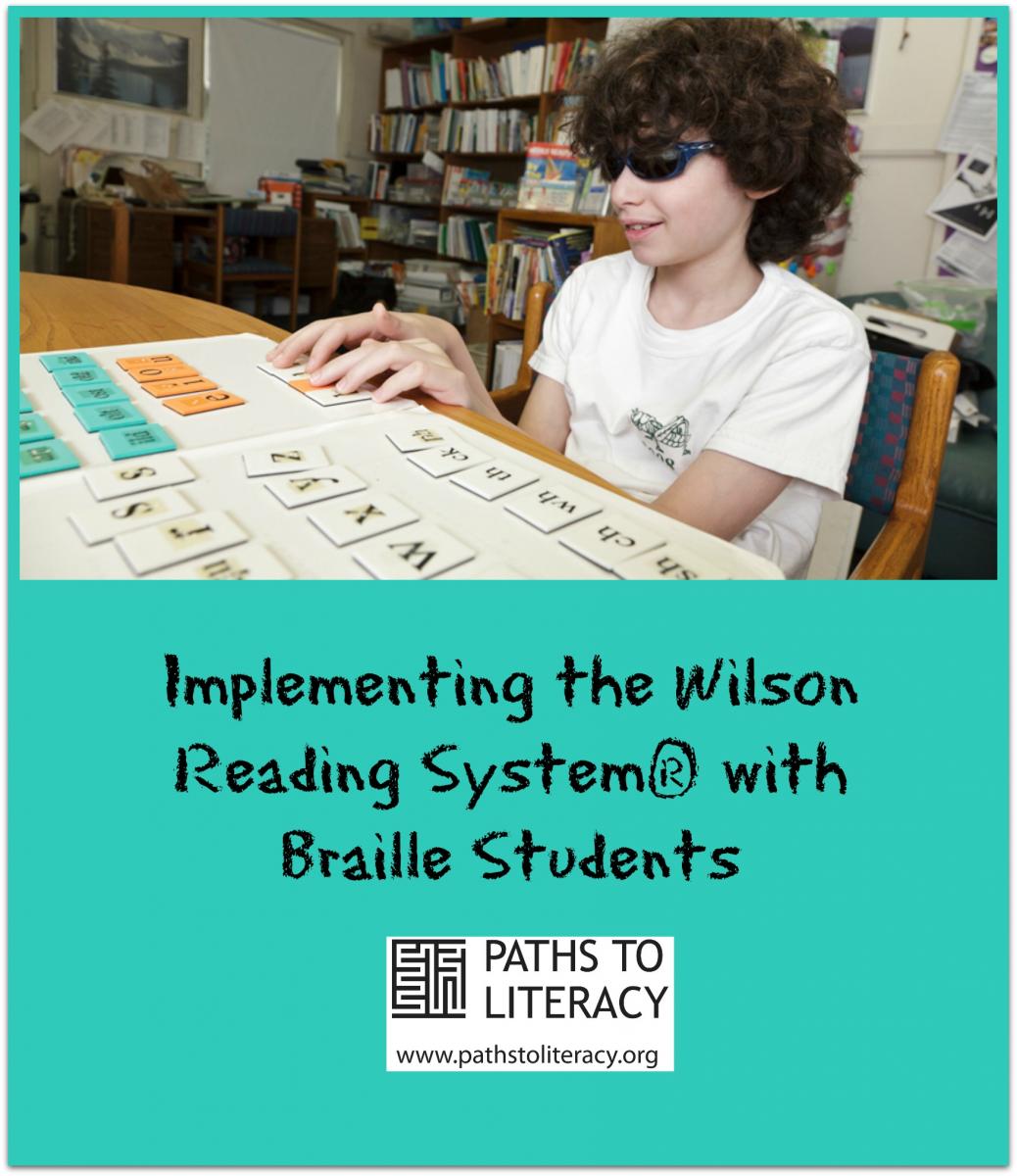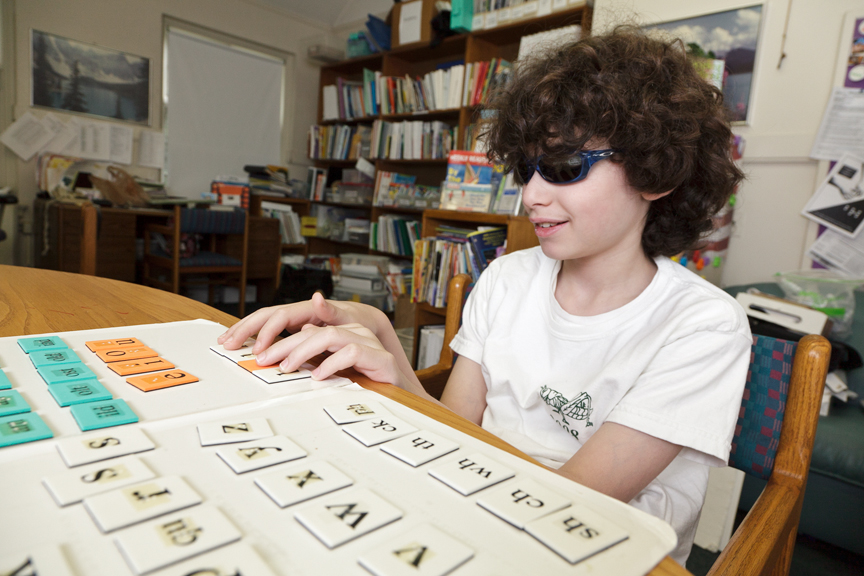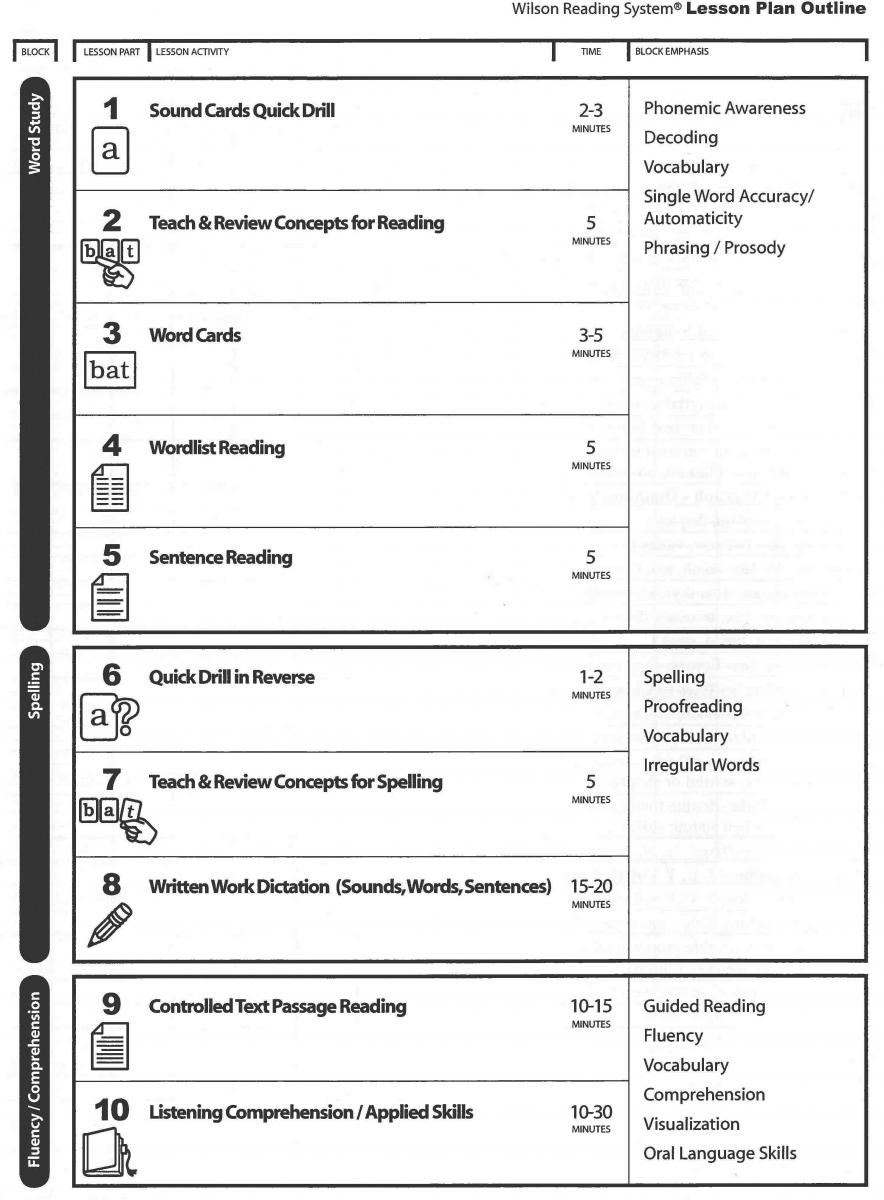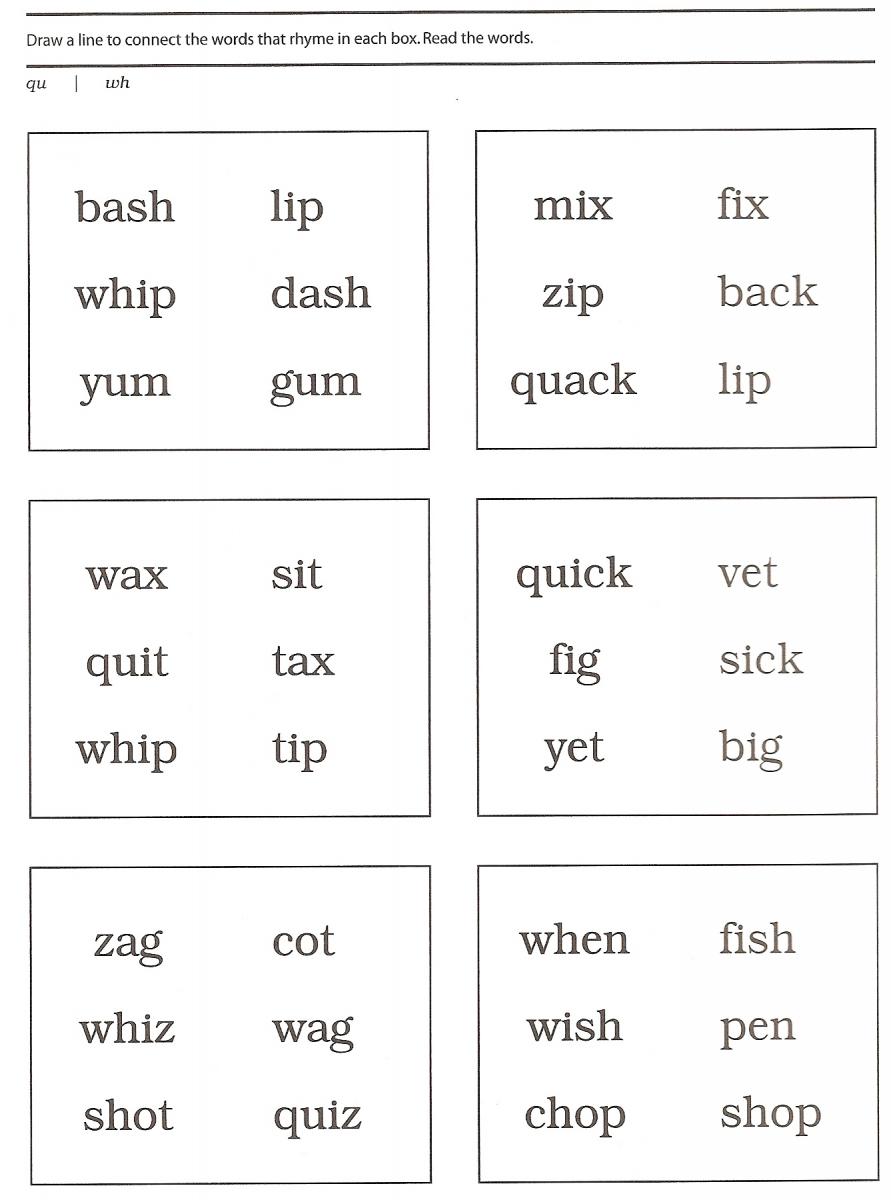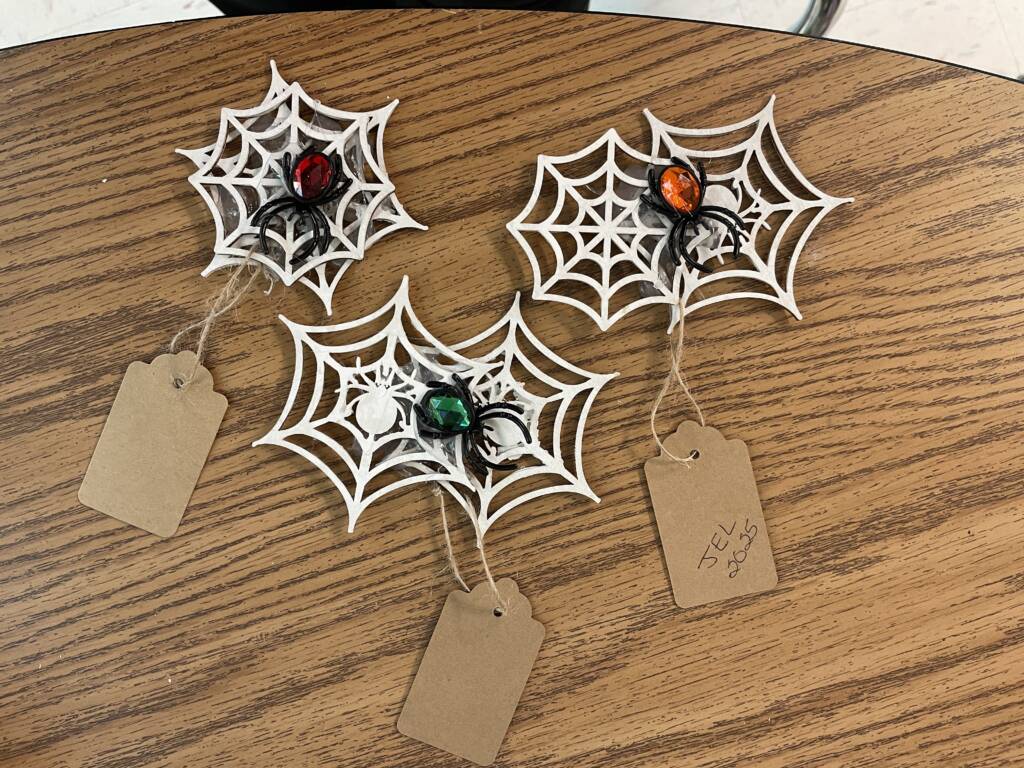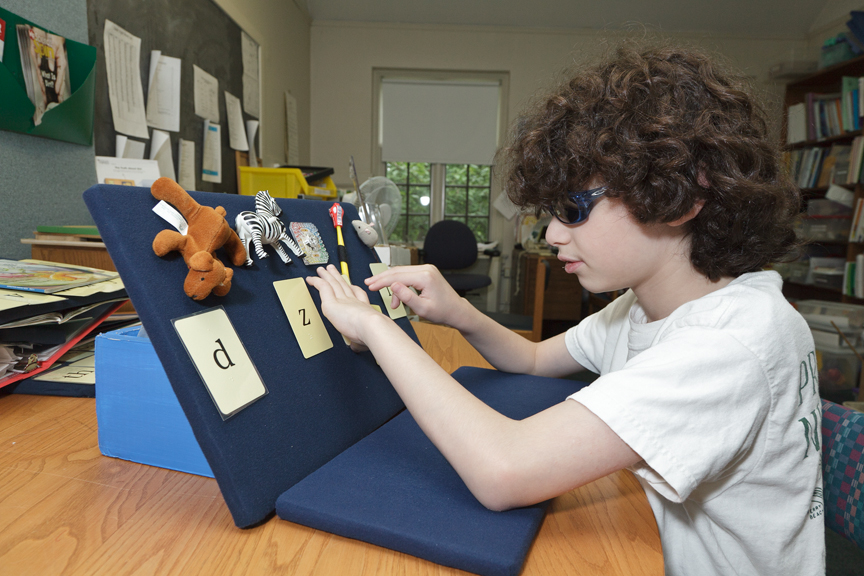 Roz Rowley and Justine Rines are co-authors of this post.
Roz Rowley and Justine Rines are co-authors of this post.
This is the second of three posts on the Wilson Reading System® and Struggling Braille Readers. See also Why We Love Using the Wilson Reading System® with Struggling Braille Readers and Case Studies Using the Wilson Reading System with Struggling Braille Readers.
Here are the details!
The Wilson Reading System® (WRS), written by Barbara A. Wilson and first published in 1988, is a print reading instruction program based on Orton-Gillingham philosophy and principles, as well as phonological coding research. Reading instruction is focused on the alphabetic principle of sound/symbol knowledge, phonemic awareness, segmentation skills, word structure/analysis knowledge (otherwise known as phonics), reading accuracy, fluency, comprehension, and spelling. This approach to reading instruction was supported by the National Reading Panel Report (2000), sponsored by the National Institute of Child Health and Human Development (NICHD) and the U.S. Department of Education. The WRS is characterized by direct teaching of rules and concepts. It is a highly structured 12-step program with each sub-step introduced through a 10-part lesson plan. A cumulative and multi-sensory program, this system has been successfully implemented in public and private schools, clinics, and adult education across the country. Numerous publications, studies, and citations have reflected the success of this reading program. Please see www.wilsonlanguage.com for more information.
Wilson Reading System® Ten-Part Lesson Plan
Here’s a breakdown of WRS’ ten-part lesson plan. As you can see, the ten parts incorporate the five essential components to reading instruction identified by the National Reading Panel (phonemic awareness, phonics, fluency, vocabulary, and text comprehension).
Steps 1 – 5 Focuses on Word Study
- Sound Cards Quick Drill in which the student says letter name – key word- corresponding sound (i.e. vowels, consonants, digraph, diphthong, schwa, etc.). The goal is automatic and accurate naming of letter sounds.
- Teach and Review Concepts for Reading in which every concept is explicitly taught and involves manipulation of cards. Some examples of concepts include how to finger-tap new sounds, welded sounds, syllable types, rules for dividing syllables, suffix endings, etc.
- Word Cards, which is reading single words on flashcards. This section addresses fluency, vocabulary, and sight words.
- Wordlist Reading using controlled, single word lists in the Student Reader. This provides more practice with concept review, fluency, vocabulary and also includes progress monitoring.
- Sentence Reading in which word attack skills are applied at the sentence level using controlled text in the Student Readers.
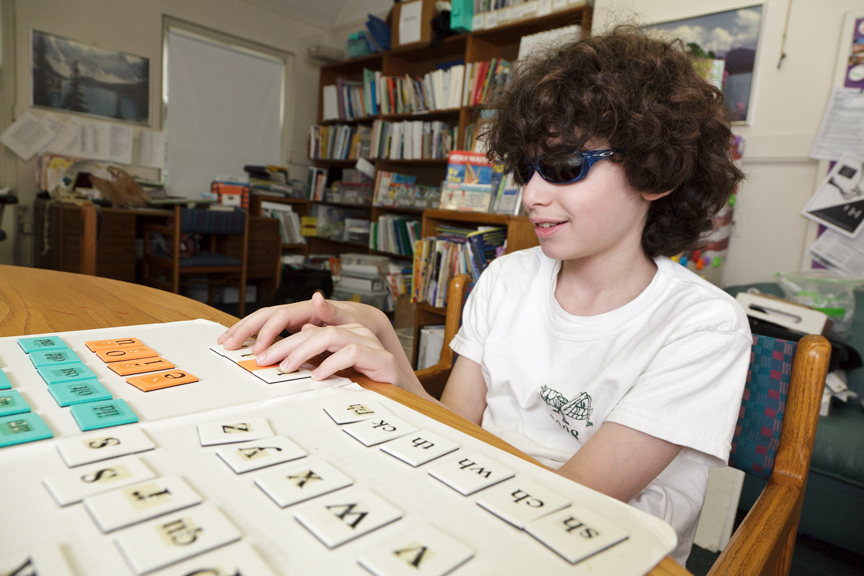
Steps 6 – 8 Focuses on Spelling
- Quick Drill in Reverse, which is encoding at the sound level (i.e. teacher says a sound; student identifies the letter or letters).
- Teach and Review Concepts for Spelling during which specific spelling rules are explicitly taught through the use of letter or syllable cards and finger tapping procedures. Examples of spelling rules include bonus letters, spelling by syllables, how to add suffixes, etc.
- Written Work, which is dictation spelling practice at the sound, word, and sentence level, and includes proofreading instruction.
Steps 9 – 10 Focuses on Comprehension
- Passage Reading using controlled text in Student Readers that only contains word elements that have already been taught. Focus is on comprehension in addition to decoding and fluency.
- Listening Comprehension in which the teacher reads “non-controlled” or authentic text to the student to develop comprehension skills at a level higher than the student’s current decoding ability.
Wilson Reading System® Braille Adaptations and Modifications
Since the WRS is a print reading program, we had to come up with many modifications and accommodations to make the program work for braille readers. Here are a few examples:
- We used objects to represent key words instead of pictures.
- WRS’s sound cards and magnetic tiles are color-coded by type to help students recognized sound-type, word structure and syllable types. A braille dot system was develop to represent the different color-coded sound cards (i.e. braille dot 1 for consonant cards, two braille dot 1’s for vowel cards, and three braille dot 1’s for welded sounds).
- The words on WRS’s word cards are first presented in uncontracted braille, followed by contracted braille.
- All Student Readers, Workbooks, and Perkins-created supplemental worksheets are formatted in contracted braille as this ultimately will be how students access written information.
- Exception – presentation of nonsense words is always done in uncontracted braille. Nonsense words are made-up words that follow all the decoding rules of the English language. This provides further practice in accurate decoding without relying on guessing or sight memory.
- We went through each sub-step and noted what contractions, punctuation marks and symbols will be found so we can teach/review these with the students before they encounter them within the materials.
- For levels one through three of the program, we created modified workbooks that contain the same concept practice activities as the regular WRS Workbooks but the worksheets were reformatted into simpler layouts so they were easier for the beginning braille reader to follow.
- Younger students used large binders for student notebooks and older student used their electronic note-takers.
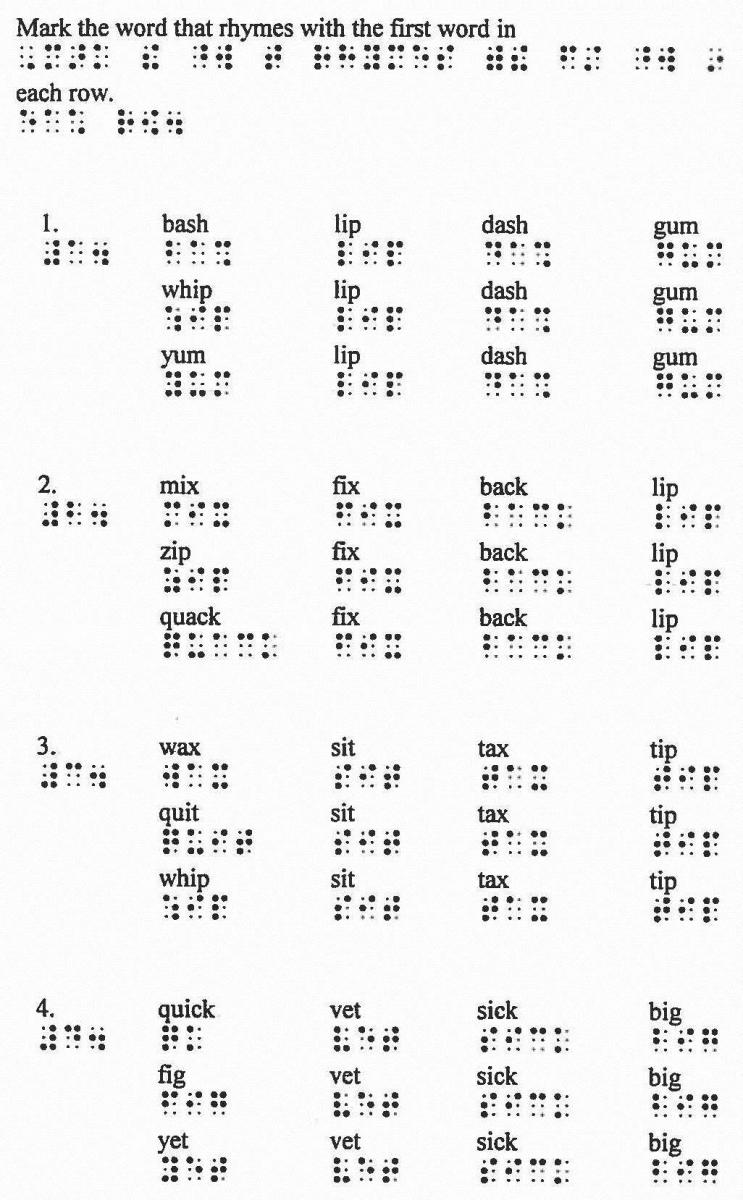
As mentioned in our earlier entry on this topic, we are happy to report that through a partnership with Perkins, The Wilson Reading Corporation, and the American Printing House for the Blind, WRS materials are available in braille through quota funds for levels One through Three. Please check back in for one more blog post with information about how two students, one elementary student and one high school student, have improved their reading skills with the help of WRS.
For more information on the Wilson Reading System®, see our earlier blog post: Why We Love Using the Wilson Reading System® with Struggling Braille Readers
